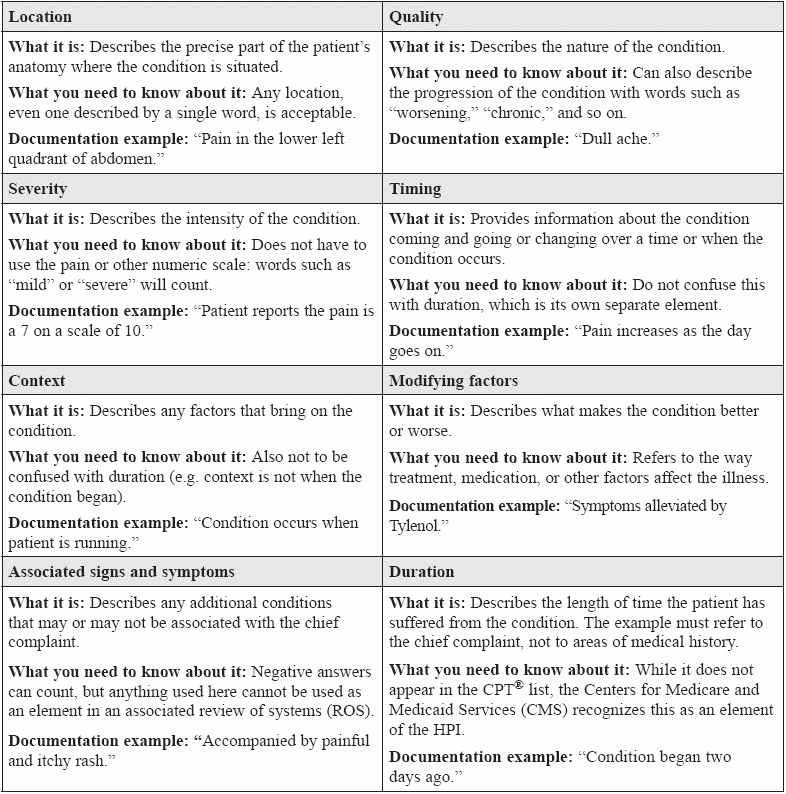Master 8 Elements of HPI, Sharpen Coding Skills
.webp)
Use this chart to keep track of HPI details. When you are coding your provider’s evaluation and management (E/M) services, you need to pay special attention to history of present illness (HPI). Most coders know a good deal about HPI and how it relates to the history component of an E/M service. Deep dive: We’re going to go into more detail concerning each of the eight elements, defining each one and explaining how you should document it. We’ve assembled all that information into a handy clip-and-save chart, then added some additional expert tips to help you determine whether a particular HPI is brief (one to three of the elements below) or extended (four or more elements). What is HPI? As CPT® puts it, the HPI is “a chronological description of the development of the patient’s present illness from the first sign and/or symptom to the present.” To create a full and accurate description, your provider will ask the patient about one or more of the following elements. HPI ELEMENT CHART Expert tip 1: “At first glance, one might wonder about the difference between timing and duration. In fact, some payers do not recognize timing, and only look for duration,” notes Suzan Hauptman, MPM, CPC, CEMC, CEDC, director, compliance audit, Cancer Treatment Centers of America. “Consider this example: a month ago, a patient with congestive heart failure noticed that it took him well over 30 minutes to walk to the mailbox instead of the usual 15 minutes,” Hauptman elaborates. “You could give ‘within the last month’ as the duration, while the timing could be 30 minutes as opposed to 15.” Expert tip 2: “Providers sometimes cover some of the HPI under the ROS, so you should take care not to give double credit,” says Melanie Witt, RN, CPC, MA, an independent coding expert based in Guadalupita, New Mexico. “For instance, suppose a patient presents for sharp pain of the abdomen. If the provider states this in the HPI, but the ROS listed under GI [gastrointestinal] states ‘denies nausea, vomiting, diarrhea,’ you cannot count the ROS element as associated signs and symptoms in the HPI and also count it as review of the GI system,” Witt explains. Expert tip 3: “Coders sometimes waste time trying to count all of the possible HPI elements when the chart has a lot of documentation. To get to the highest level, you only need four of the eight, so you should stop counting at that point and move on,” Witt advises. When that happens, and you find elements documented in the HPI above and beyond the four needed for an extended HPI, you can use them toward the ROS instead.




